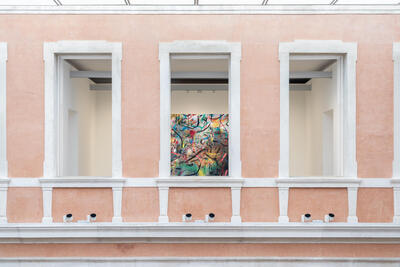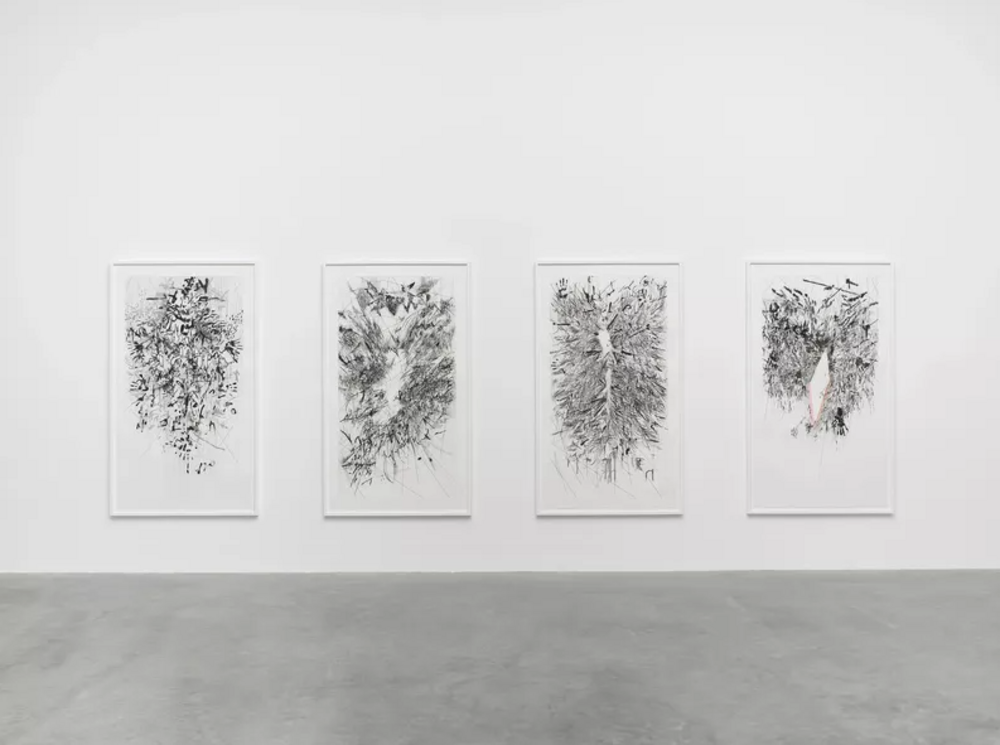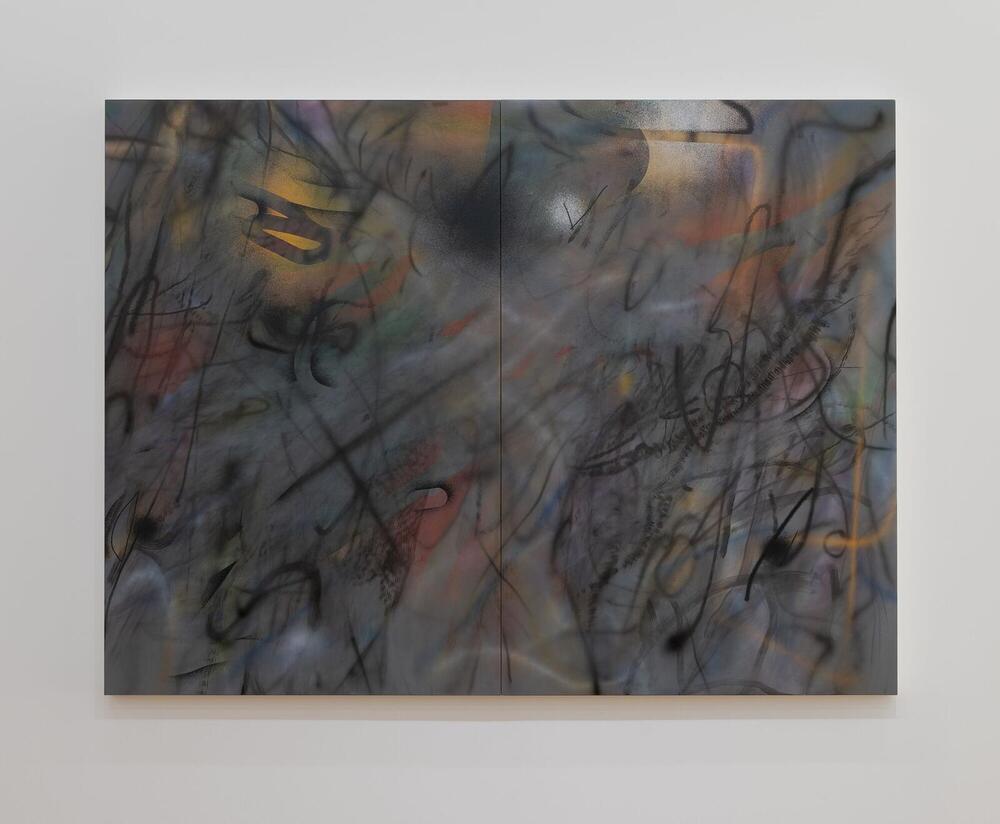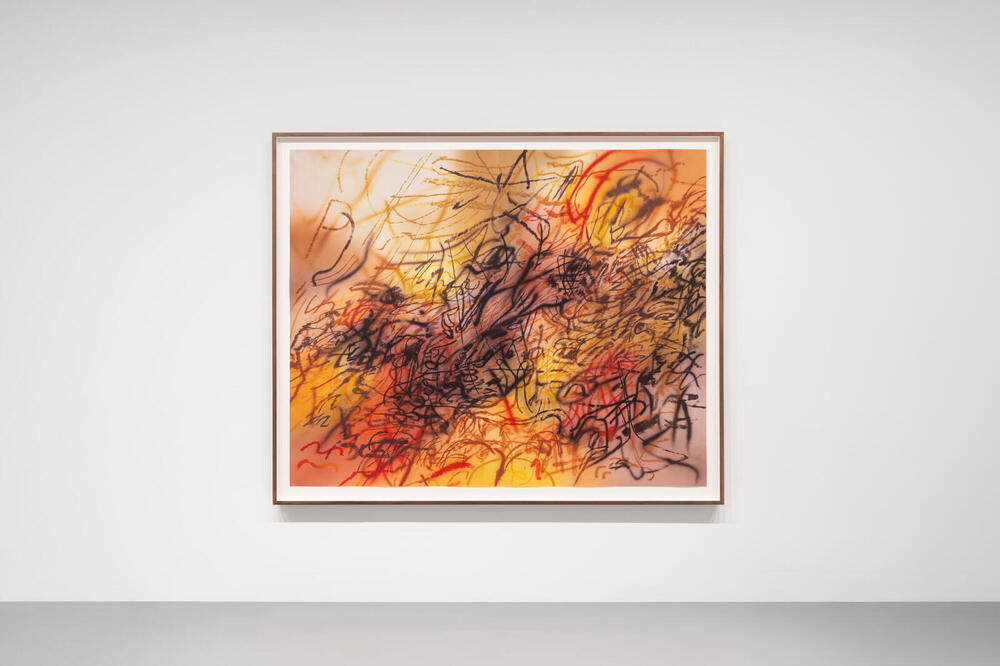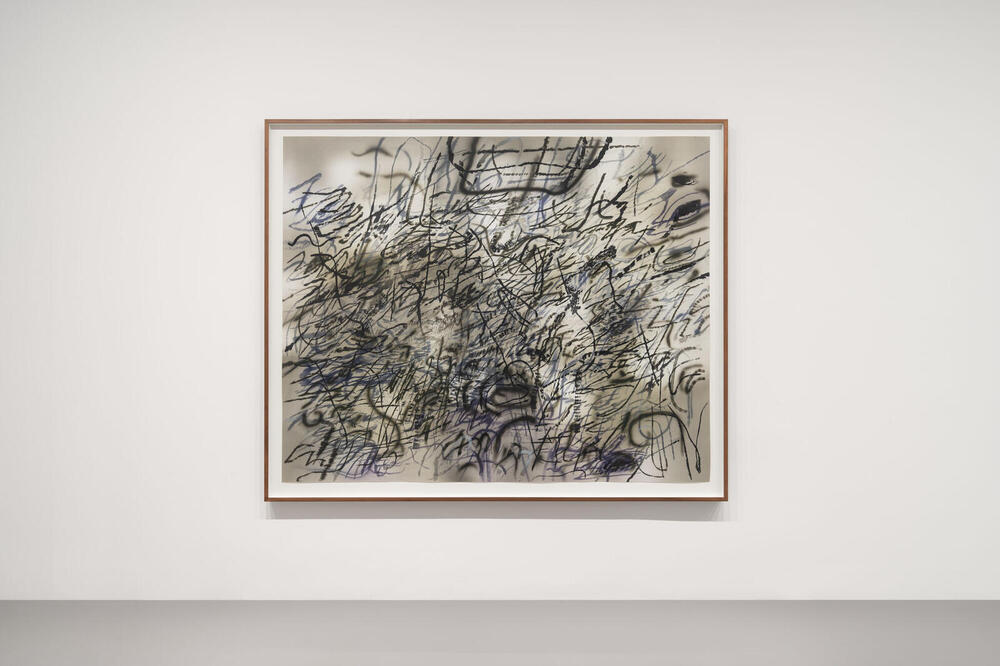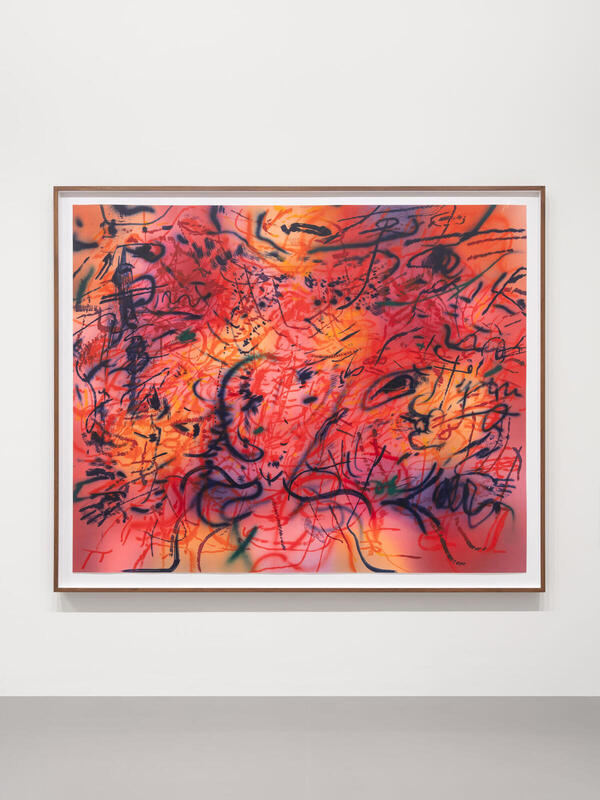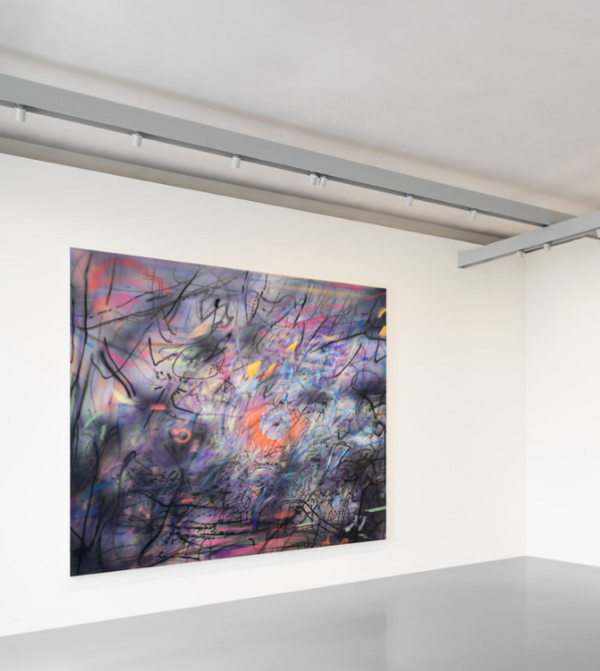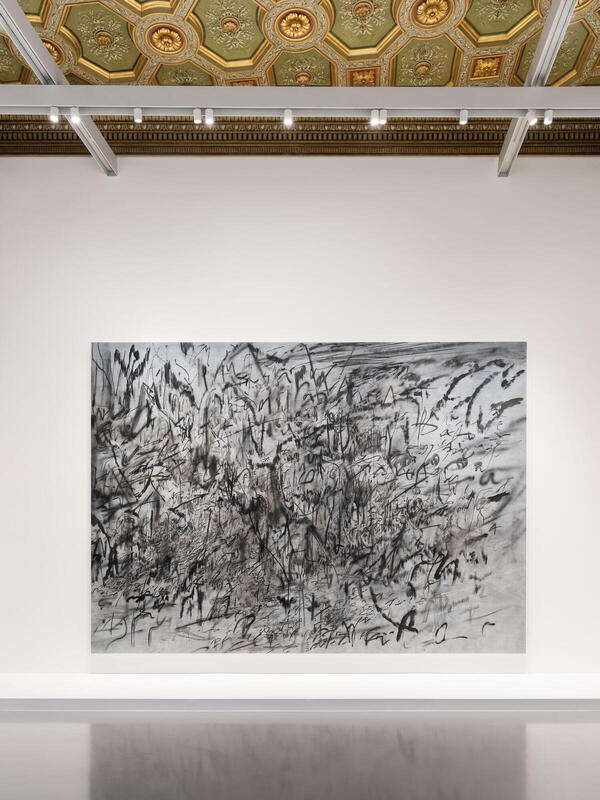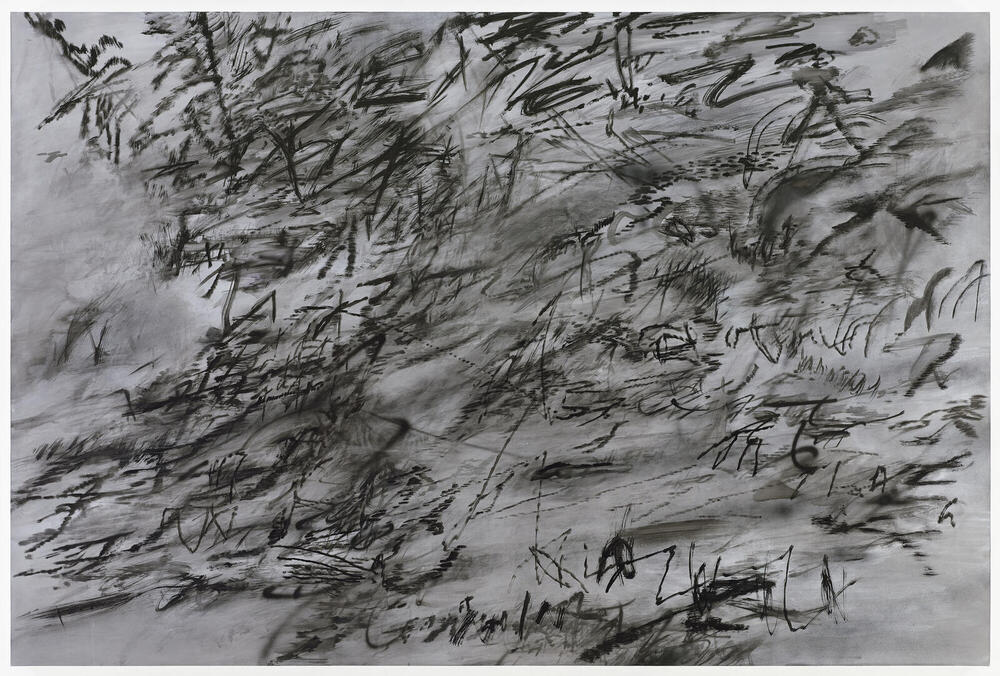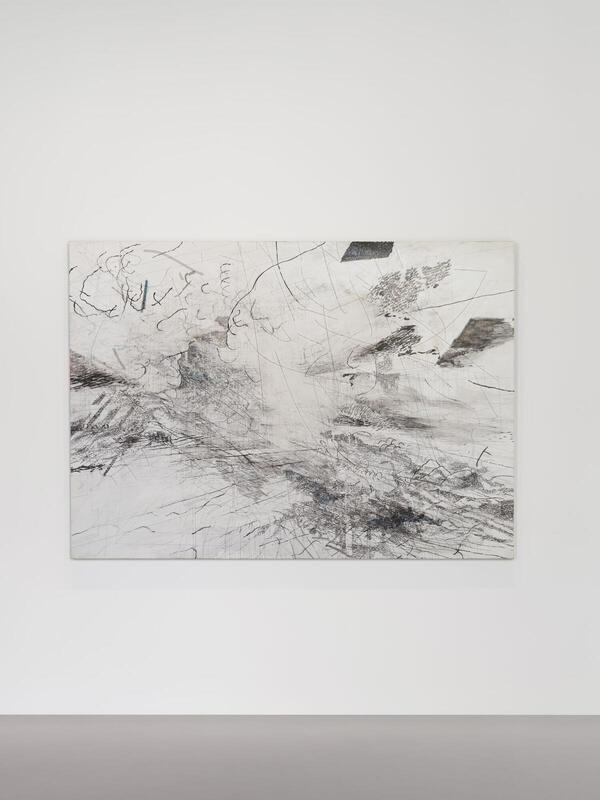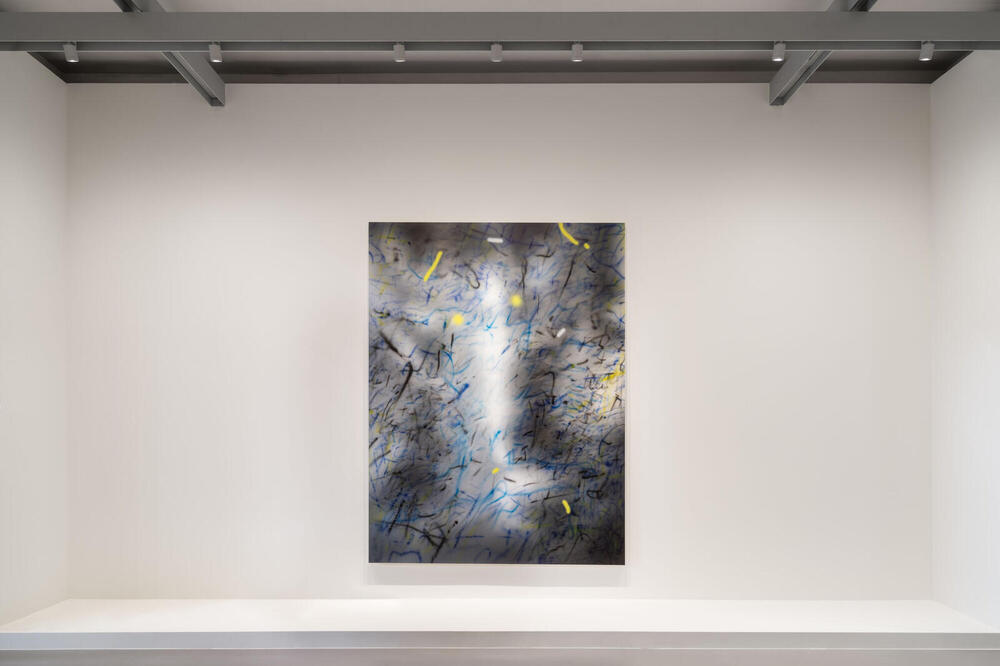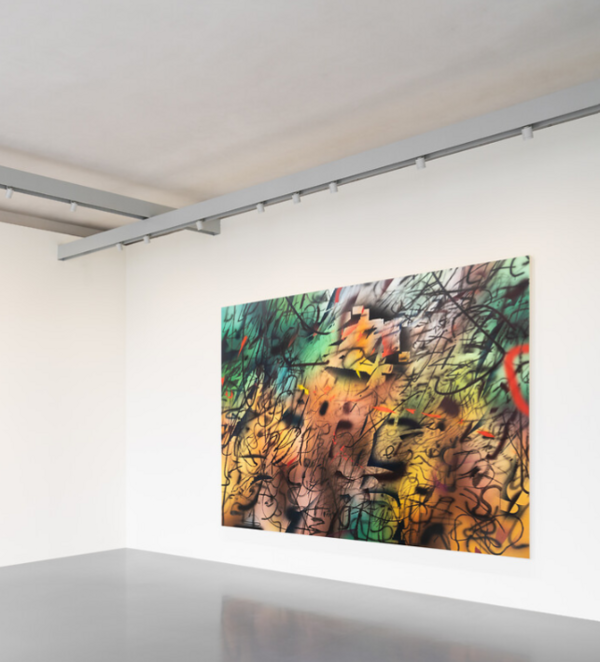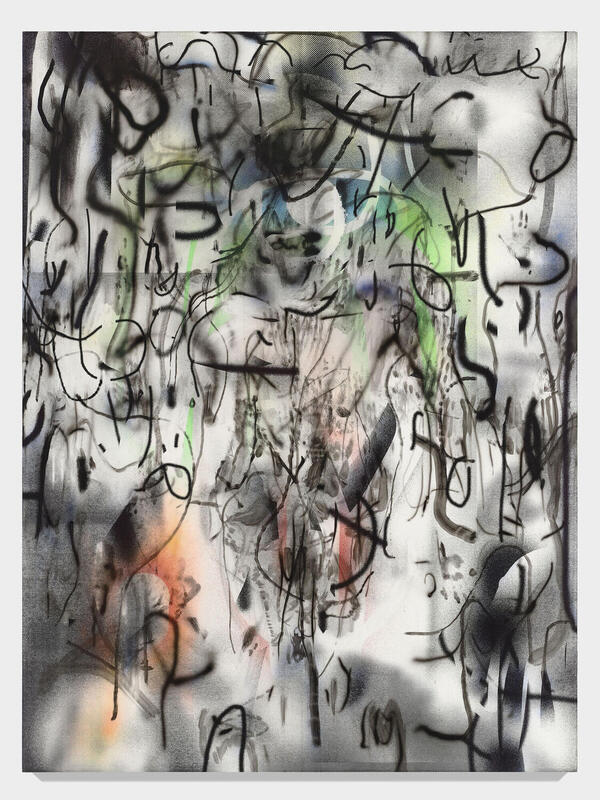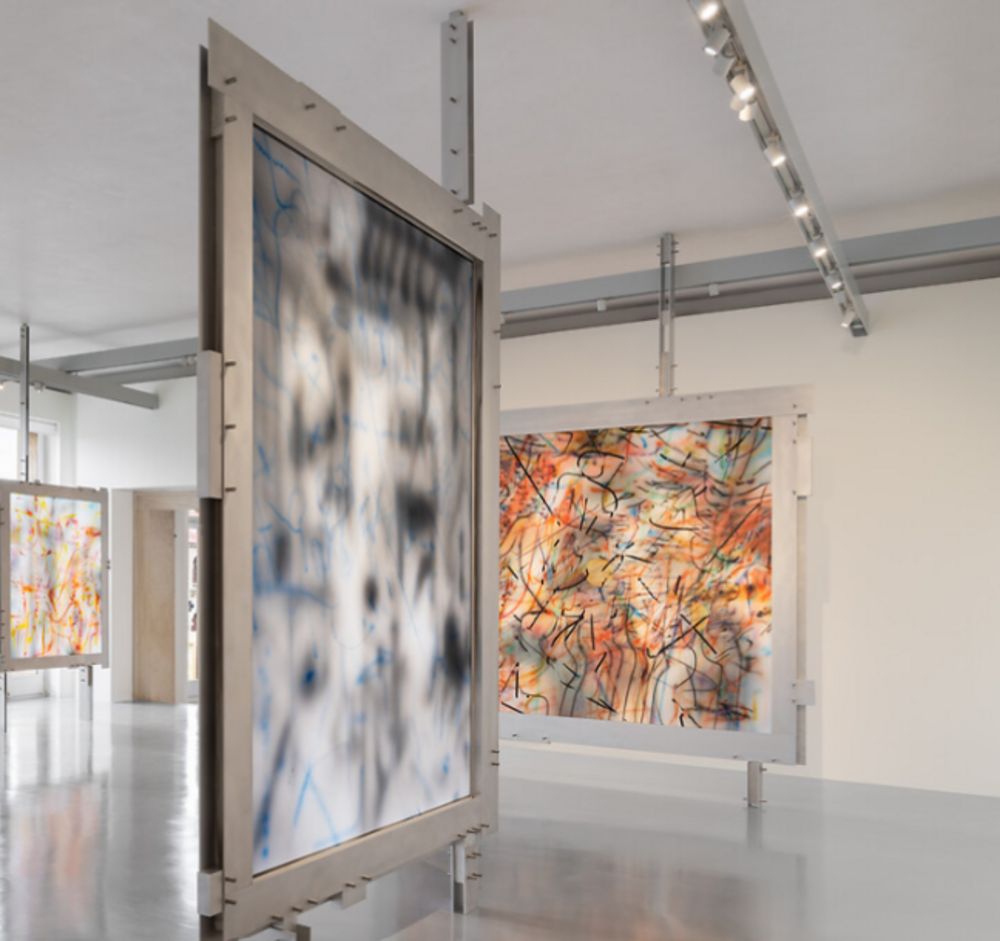Desire was our breastplate
Ink and acrylic on canvas243,8 × 304,8 cm, 41 kg (96 × 120 in, 90,4 lb)
Mehretu’s layered, calligraphic language is acutely attuned to the disorientating and constant transformation of the political moment. Using ink and paint, the artist smudges, erases and overwrites through layers of transparent medium, both visualising the accrual of history and committing her own response.
By 2013, Mehretu had begun using images from current affairs as her starting point by blurring colour and form, and using digital methods as a tool for abstraction. News photos of rallies in Charlottesville, Hurricane Sandy, the Syrian civil war, the Grenfell Tower fire are subsumed in paintings that articulate the simultaneous and interconnected nature of seemingly disparate events. These found images are digitally blurred and altered, and then airbrushed onto canvas, a process that Mehretu calls ‘melting’ the image. To this base layer, she adds and erases using screen printing, ink and acrylic paint. ‘Desire was our breastplate’ takes as its starting point a press image from the January 6th Insurrection, whereby right wing protesters averse to the 2020 electoral college vote stormed the United States Capitol building in Washington.
Mehretu transforms the image of combatants in conflict – armed with riot gear and captured mid confrontation – into a cosmic eruption of deep purple, indigo, gold, and black. In dissolving the documentary image, it is as if we are in the process of witnessing the dissolution of power and its violent weaponisation. Enabled by the viewer’s traversal around the works, and according to one’s precise position in relation to the canvas, the colours of Mehretu’s dynamic marks appear to shift; for instance, from one angle emitting a shocking, metallic pink, and from another, almost disappearing entirely. This is achieved by using ‘interference’ acrylic paint, which operates according to light refraction. In this process, particles of light enter the paint/pigment matrix and scatter light. This differs from ‘iridescent’ paint which relies on particles of light bouncing, creating reflection. The resulting composition is therefore enlivened by motion, adding a crucial temporal dimension to the painting.
The title ‘Desire was our breastplate’ is taken from a phrase used by poet Robin Coste Lewis in the recent multimedia performance ‘Archive of Desire,’ wherein Coste Lewis, Julie Mehretu, Vijay Iyer, Jeffrey Zeigler, and Charlotte Brathwaite meditated collaboratively on Greek poet C. P. Cavafy, diaspora, and the liminal spaces present in his work. This painting was filmed and shown alongside Coste Lewis reciting her original poem inspired by Cavafy, accompanied by two musicians.
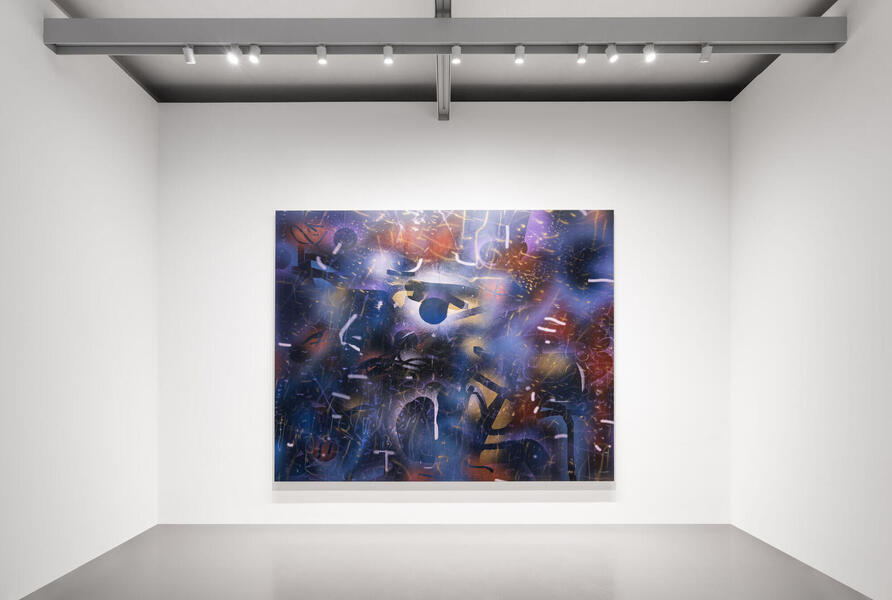
Installation view, “Julie Mehretu. Ensemble”, 2024, Palazzo Grassi, Venezia. Ph. Marco Cappelletti © Palazzo Grassi, Pinault Collection
